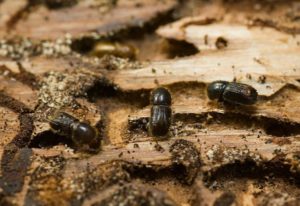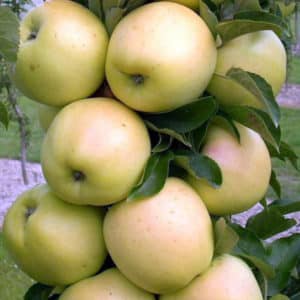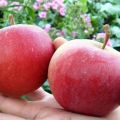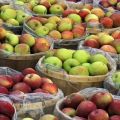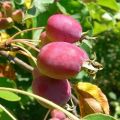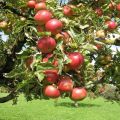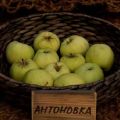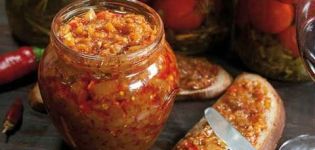Description and characteristics of the Kovalenkovskoe apple tree, planting, growing and care
Among summer residents, the Kovalenkovskoe apple variety is especially popular. This demand is due to the mass of the plant's advantages: high yield, taste of fruits.
History of the Kovalenkovskoe variety
Breeding work on the breeding of the Kovalenkovskoe apple tree was carried out on the territory of the fruit-growing research institute of Belarus. The development of the variety was carried out in the late 1990s. The variety got its name in honor of a breeder who is actively working on breeding the plant.
Pros and cons of the view
Experienced summer residents highlight several advantages of this variety:
- obtaining regular large yields;
- high frost resistance;
- preservation of ripe apples on the branches.
There are also disadvantages. These include the average resistance to scab, drought intolerance, short shelf life of the harvested crop.
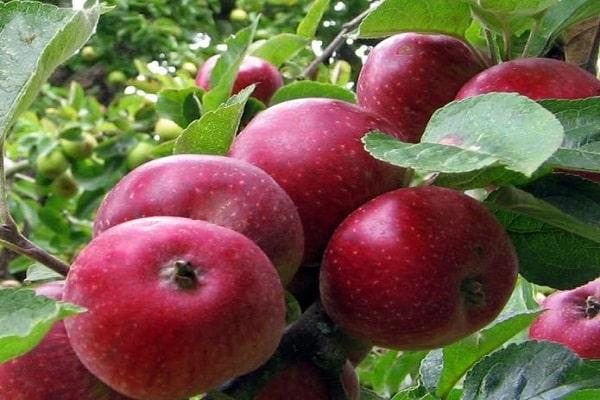
Description of the tree and fruit
Due to the characteristic color of the fruit, this variety has another name - Red Sweet. The tree itself also has distinctive features.
Barrel height
The tree is medium-sized, actively growing. When located on a seedling stock without pruning, it can grow up to 4.5-5 meters.
Crown size
The crown is distinguished by a round, dense structure. The shoots are characterized by their strength, they are directed downward under their weight. Shoots are painted in a dark reddish tint.
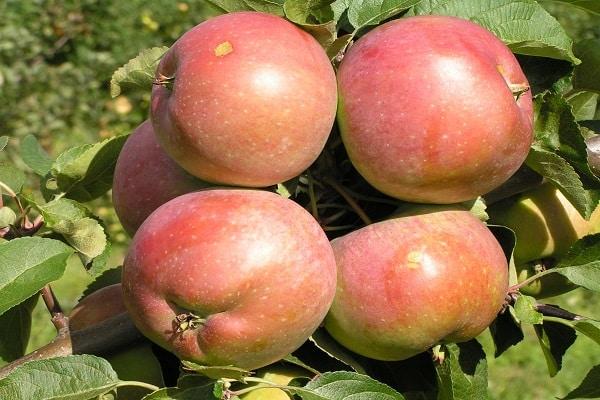
Root system
The roots of the tree are well developed, which allows the tree to form dense stems and a powerful trunk. The root system lies superficially.
Annual growth
The apple tree is actively developing, which is why its annual growth is 0.9-1.1 meters. Such indicators are achieved when favorable conditions are established.
The appearance and taste of the fruit
The main value of the variety is its fruits. They are large, on average 175 grams, with a regular rounded shape. The skin of apples is greenish, but almost all of its surface is covered with a reddish blush.
The pulp of the fruit is fine-grained. Apples are juicy, medium density. The taste of the fruit is sweet and the aroma is delicate.

Features of fruiting
To get a good regular harvest, you need to know about the nuances of fruiting this variety.Particular attention should be paid to the timing of fruit ripening.
Early maturity
This variety is fast-growing. The seedling gives its first harvest 2-4 years after planting.
Beginning of period
The fruits begin to ripen in August or early September. The peak of apple ripening falls in September.
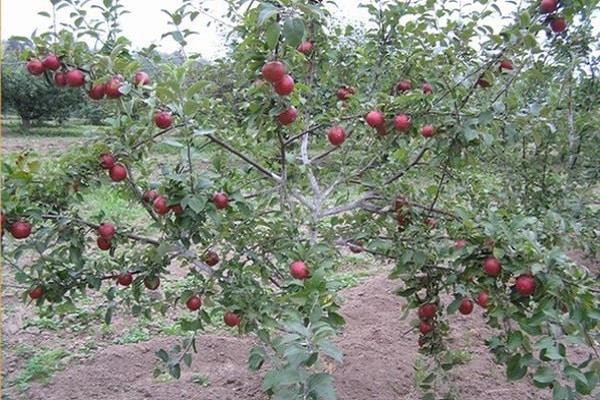
Fruit ripening period
During fruit ripening, they do not fall off, but are firmly fixed on the branches. This feature makes it possible to harvest apples at a chosen time.
Storage and use of apples
The harvested crop is versatile, it is suitable for consumption freshly harvested, as well as after processing. Within a month after picking apples, they ripen. After the crop reaches its maximum maturity, they cannot be stored for long.
Specifications
When growing the Kovalenkovsky variety, you need to pay attention to its technical characteristics. These include winter hardiness, disease resistance.

Resistance to negative temperatures
Trees planted on the territory of Belarus, Ukraine, the middle zone of the Russian Federation are characterized by high frost resistance. Some summer residents successfully grow this variety in southern Siberia. But in this case, the tree must be carefully mulched.
Disease immunity
The variety is resistant to pathologies, has an average resistance to fungi. To protect against fungal infection, the soil must be regularly treated with "Karbofos", "Fitosporin".
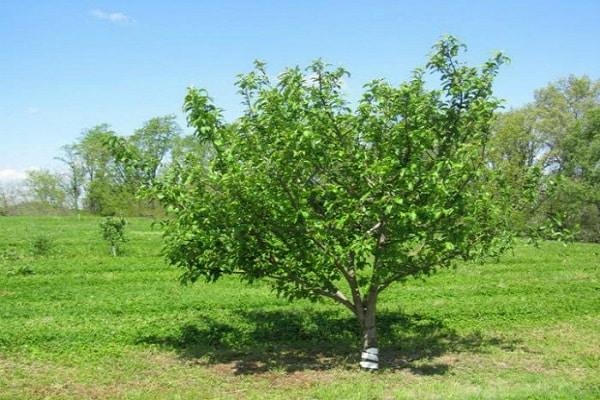
Planting and growing
To effectively grow trees of this variety, you need to know the planting rules. First of all, you need to pay attention to the quality of the seedlings.
Selection of seedlings
The best option would be to buy material for planting at the age of 1 year - it more actively adapts to the environment, increases resistance to pathologies and unfavorable weather conditions, and is less whimsical to care for.

To determine the quality of a seedling, you need to pay attention to several nuances:
- Planting material in containers must be carefully inspected, for this it is advised to remove the tree from the packaging container. The soil ball must be solid, while the roots must braid it.
- A seedling ready for planting has flexible stems, healthy bark that is free of damage: if you scrape it off a little, you can see a green layer of cambium.
- There should be a vaccination site on the tree. It can be seen by a slight thickening and curvature on the trunk, 5-15 cm from the root collar.
- A healthy root system is usually light brownish in color; it should be fresh, not dried, it should be free from growths, damage. Brown color, swelling and unevenness of the roots are signs of the disease.
Before planting, the selected material must be kept in a growth stimulator for 2 hours.

Preparation of soil mixture
To plant a tree in spring, the site must be prepared in the fall. If planting is planned for the fall, preparation must begin 2-3 weeks before disembarkation. To prepare the soil, you need to follow the instructions:
- Dig square holes with a side of 0.6 meters and 75 centimeters deep. The distance between the holes is 3 meters.
- Set aside the fertile layer, add 0.1 kilo of superphosphate and 1 liter of ash to it, mix. You can replace fertilizer with 3 buckets of compost.
- Add sand to clay soils, and add humus and peat to the sandy soil (at the rate of 1 bucket per square meter).
Landing schemes and dates
It is best to plant the planting material in spring or autumn. If the territory is dominated by a temperate climate, planting is required in the fall. The best time is September or the first part of October. In the Ural and Siberian territories, planting should be organized in early spring.
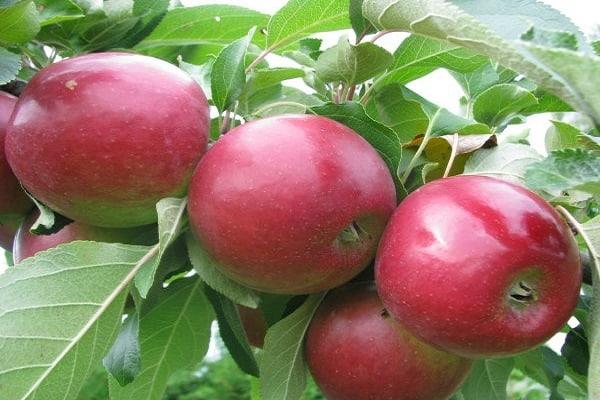
You need to land according to the scheme:
- In the middle of the hole, form a hillock of 20 cm, place a seedling on top of it.
- Hammer a peg from the side - it should protrude about 80 cm above the top of the pit.
- Cover the root system with prepared soil mixture. Tamp it down slightly. The root collar should remain about 5 cm above the soil level.
- Using a shovel, form a watering groove around the seedling, pour 2 buckets of water into it.
- Snap the landing to the support structure.
- After absorbing moisture, cover the soil with a layer of sawdust 7 cm thick.
Irrigation regularity
Apple trees planted in spring should be watered once or twice a week. 1 plant should have 30 liters of water. Gradually, the regularity of watering should be reduced to 1 time per month.
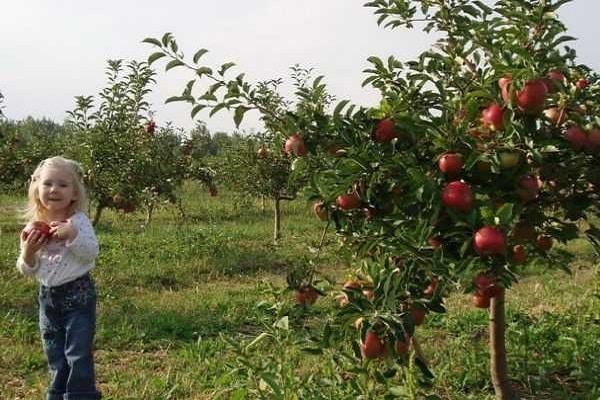
Top dressing
You can increase yields with fertilizers. Within 1 year after planting, the plant is not fed. In subsequent years, the trees are fed according to the recommendations:
- in the spring - urea (2 tablespoons per 10 liters of water);
- on the eve of flowering, spraying the crown with "Ideal" (5 milliliters per 5 liters);
- in September - phosphorus-potassium solution (2 tablespoons per 10 liters).
Pruning
In the first 5 years of plant growth, formative pruning should be done. A tree for five or more years needs rejuvenating pruning.
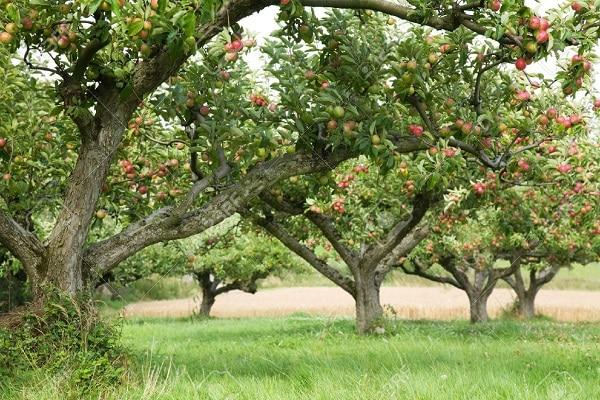
Watering and loosening
The soil around the plant must be loosened regularly, all weeds must be removed. You need to loosen the earth to a depth of 10 centimeters.
Water the plant along the furrows. You can also use drip irrigation technology.
Shelter for the winter
For the winter, mulch the soil around the trunk with hay or straw. If the trees are young, it is recommended to tie their trunks with agrofibre.
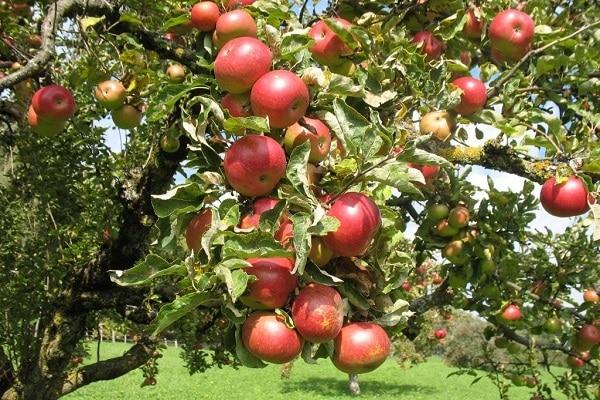
Prevention and treatment of tree diseases
Kovalenkovskoye needs preventive treatments. But with improper care, it can be exposed to diseases. Therefore, when growing an apple tree, it is required to regularly inspect the trunk and branches for traces of diseases and pests.
